Fettling the big build + more - Mick's Workshop 448



|
Fettling the big project, Soarer surgery, big fast Jags and much more...
You might have been following our progress on Tom’s very special HG GTS Monaro project. We’re starting on the engine, which is a 400 Chev that we’ve stroked to 427.
This reminded me to offer a bit of advice on stroked engines. When you’re assembling the bottom end, there are two critical checks: clearance without the cam and then with it in. Keep in mind the bigger stroke literally takes up more room, so you need to be sure there is actually enough clearance to allow for heat expansion and the movement involved in a running engine.
In any case it’s a check you do both visually and by gently turning the assembly.
Something I recommend to most people is that, when it comes to building the short engine, it can be smart to hand it over to a professional. There are some subtleties that only experience teaches and that way you have some fallback if something goes wrong.
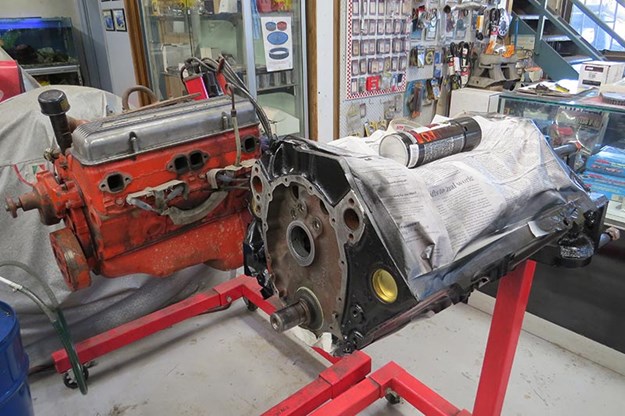
MINOR GLITCHES
At the other end of the build, when everything seems done, people are often frustrated when there are teething troubles. I don’t care how good or experienced you are, this will always happen. It can be something as simple as a component working loose, or more subtle like an electrical component struggling under load.
You can’t keep the car in the workshop, testing over and over. Eventually you have to hand it over. The thing is, you’re trying to get a pretty complex mix of parts to all work together and it usually takes time to get that absolutely spot-on.
And it will only surface when the car has had some use.
For example we have a beautiful Holden Statesman in the shop, which we built for Steven. A lot of time and effort has gone in to it and it’s been done the way he wants it. Now it’s back to sort a few issues.
When a build finishes, I’ll suggest the owner gets a little notebook, asking them to jot down every little thing that happens. Generally there will be a few things – that’s just the nature of big builds.
Often it will be little leaks as things settle down and maybe loosen a little, and they’re easily fixed. In any case, we like to go over all the nuts and bolts and retension once there are a few miles on the car, literally from the sump through to the rocker covers.
In this case the odd trouble was it was pinging when working hard. We checked everything: timing, compression, you name it.
Eventually we tracked it down to a minor fault in the brand new distributor that caused it to over-advance. Just one of those things.
Another was the new pulley on the alternator isn’t quite right and is feathering the belt.
This is all part of the big build experience and, once sorted, you have something that’s next-level.
HERE'S MY TIP
Check ya nuts
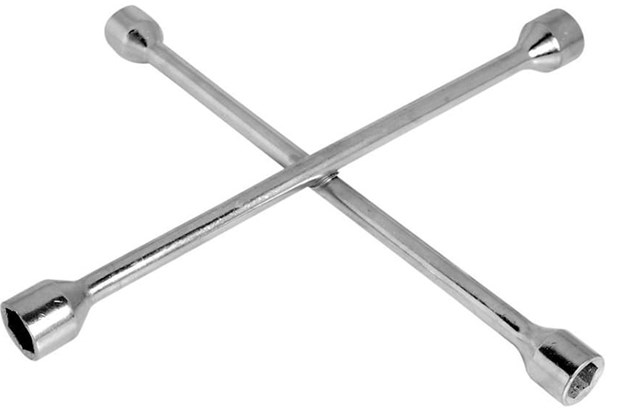
If you’re running aftermarket wheels, it can pay to run a wrench over the nuts every now and then. For some reason, this seems to happen with some cars more than others, but the wheel nuts can loosen over time. For example, the Ed’s 1976 BMW 633 is notorious for it, and it’s running period BBS wheels. And make sure you do this by hand – not with a rattle gun!
Soarer Surgeon
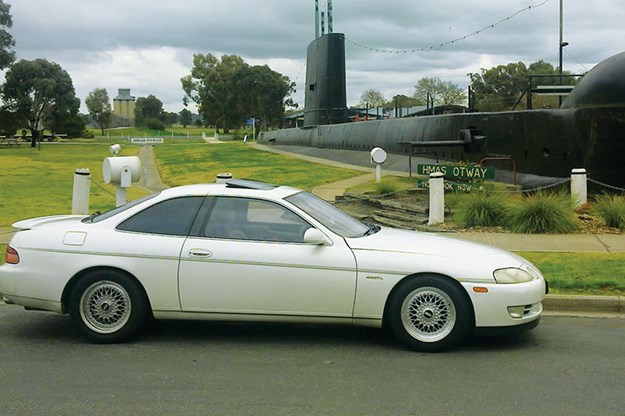
Always a pleasure to get the new edition and look forward to the surprise of what’s to be found in each new issue. Great mag, long live the analogue magazine, keep it up.
Speaking of surprises I was chuffed to see the letters about the Toyota 1UZFe V8, this soon to be legendary motor, and the job of front of the donk maintenance.
Very important to an otherwise bulletproof power plant.
I was chuffed because in the recent past I completed this job twice. On my daily 1996 UZZ31 soarer and my 1991 UZZ32 project car.
If you have heard of or ever been in a 32 Soarer, you’ll know these cars are worth saving.
The 32 was a bigger challenge with lots more gear to be removed.
On both I installed new crank and cam oil seals, water pump, tensioners and belts, timing and front utility, and all front running bearings replaced withnew ones knocked back into the old wheels. Naturally, everything cleaned up before putting back in.
I did these jobs at home in the driveway, with a basic Kingchrome socket set, a set of 10 metric spanners, and a motley collection of old random hand tools, screwdrivers and nothing technically more advanced than a torque wrench and an impact driver I borrowed to get the front crank bolt off and back on.
I sound confident here but there were mistakes, skinned knuckles, the odd ^#^%#$ phrase muttered. But, as NASA said, "If all goes well...in five days we’ll be on the Moon!"
The message is: Don’t panic, just work the problem.
A workshop manual is paramount and you can’t do something like this without it.
To those out there who want to do a bit more to their toys, it’s totally possible and the result is commensurate with the effort you want to put in.
You need to work step by step, photograph, store and label parts etc. Whenever I was confronted with a special tool step, I just stood back and thought about it until I came up with a work around, or fabricated something out of my old bits of junk. As a result I think there is no driving experience as rewarding as the one where that thing taking you down the road was bolted back together by you and humming along as good, or even better than new.

In the depths of the Soarer..
Happy motoring to all now we can drive further and use our wonderful cars.
Jack Holt
THIS IS IN response to a piece a couple of issues back where I said that replacing the cam belts in a Soarer V8 was important, but beyond the reach of most home mechanics, given there’s a fair bit of complexity involved. Then, if you were going to do it, I offered some advice.
Jack, mate, you have a pair bigger than the farmer’s prize bull. To have a go at it is pretty brave. To have a go in a driveway with minimum tools is legendary. And to pull it off? Yep you get a gold star for that effort.
It’s not something I’d normally recommend, as there isn’t much room for error. You need a bit of nouse about you and, as Jack says, you need to be able to stop, think and have another look at it when you hit a road block. Nice work.
We’ll probably revisit this soon, as Ed Guido’s Soarer needs new belts.
Broadspeed Jag
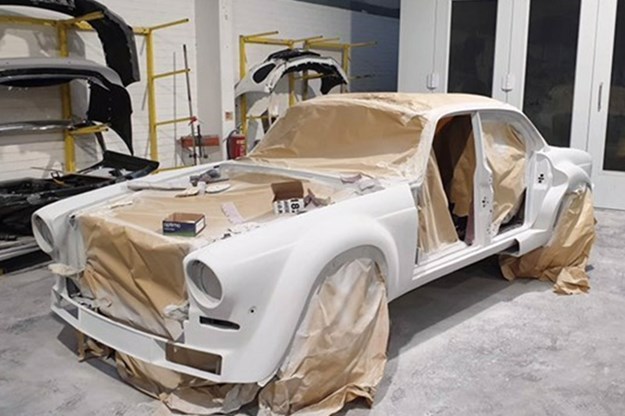
Broadspeed Jag taking shape
Hi – thought I’d share my current project. It’s a 1973 XJ6 Broadspeed. Normally they’re a two-door, but this was done professionally a long time ago and I’m wondering if it might be the only four-door getting around?
It’s taken me about 18 months so far and you can see we’re making progress.

Wolfrace wheel
I’m pleased to have a lot of the original gear, such as the Wolfrace slotted wheels.
Phil McDermott
THAT’S A seriously impressive bit of gear and, please, let us know when it’s finished as there has to be a story in that car. It’s a great project, rare but achievable if all of the original modded gear is there. And it looks like it is in this case.
I’ve got a lot of time for those Jaguar six motors, too. Like a lot of people I’m in love with the older 3.8, though the 4.2 offered some very useful extra torque.
The only catch with those engines are the raw steel head studs, which have a nasty habit of refusing to budge, or snapping, when you go to rebuild them. You hear some very funny stories. It’s not a deal-breaker and everyone replaces them with stainless steel. That removes the problem.
Aside from that, they’re a fabulous engine and seem to put up with any amount of tuning. Left somewhere near stock they last forever, but are incredibly tolerant of hot-up work.
That car will be a real head-turner when it’s on the road.
Commodore Vibes
My VZ Commodore (a six) seems to enjoy eating tailshaft center bearings. I’ve been through a few, even though the car is looked after. In fact, it’s happened enough that I immediately know what the issue is, once the vibration starts up.
Russell G
IT’S SURPRISINGLY common on those two-piece driveshafts, Russell. There are a couple of traps for young players when they set them up, mainly to do with the spacing of it. There are spacers on the center bearing when you take it apart and put it back together – on the spline – and another two on the mounting. If you install them in the wrong order, or forget them altogether, it will put the joint in the center bearing out of alignment and it will wear excessively fast.
You should get at least 100,000km out of one.
Now if you’re reading this wondering if yours is on the way out, there is a clear-as-day symptom. As you accelerate away from a standing start, you’ll get a thumping under the floor as if someone was having a go with a rubber mallet. It’s not overly difficult or expensive to repair.
Low Profile
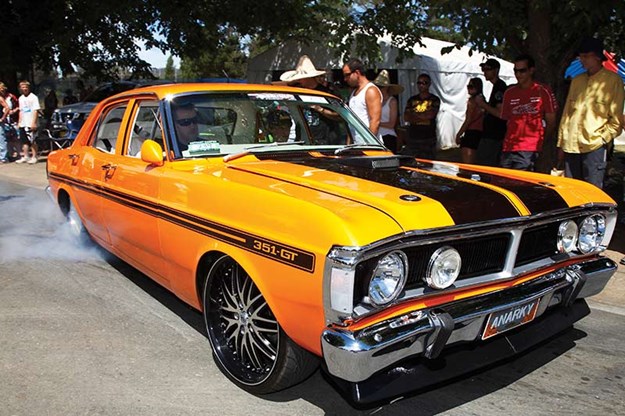
Low-profile tyres can make or break the ride and look of your classic
Mick, I have recently bought an old E30 BMW 3-series. It would have originally had smaller wheels on it, but is now sitting on 19s. I’m tempted to swap back, as you hear stories about low profile tyres being a lot easier to puncture.
What do you reckon?
Dave Castle
THE THING with low-profile tyres is they were developed specifically for high-performance applications, such as a racetrack, where less sidewall movement and flex could be a real advantage. You get less heat build-up and sharper steering response.
The thing is, they’re not always as happy in normal road use. It’s true low sidewalls seem to cop more grief over dirt roads, but my biggest issue is with what they do to the ride of the car.
Those taller sidewalls were part of the mix when the suspension of the car was originally developed, and so when you remove some of that ‘give’ you also remove some of the comfort.
I’ve been surprised just how little extra can make a difference. For example we’ve been playing with a 996 Porsche with 19-inch rims and have found that fitting rubber with just 5mm extra height in the sidewall was enough to make a very noticeable difference to the suppleness of the ride. Certainly more than I would have expected.
A lot depends on how you’re going to use that car. If it’s cruising around on a mix of roads, then you might consider a swap. Getting good grippy rubber for 13 and 14-inch wheels is a real problem, while 15-inch is less of a problem. Go to 16-inch (which can be a pretty good compromise) and there is a pretty good range of choices out there.
Oils?

Mineral oil not synthetic is best for older engines
Hi. You’ve probably answered this a million times, but what oil should I be running in my XC Falcon GS with a 302. And should I worry about it getting hot in Summer?
Tim Yardley
WE PROBABLY have covered it a few times over the years, Tim, but it’s one of those questions that always fires up a debate and deserves looking at every now and then.
Before I answer, let’s look at something most people don’t realise: Oil’s third job is to lubricate. Its first is for knock – to take up the gap and protect your bearings; its second is to help provide temperature control; its third is to provide general lubrication.
As for what to use, in those older generation cars, go for a good quality mineral oil – not semi-synthetic and certainly not full synthetic. I’ve found in the past that Penrite has been pretty spot-on in this area, with its HPR range. In this case, you’d be looking at HPR30, which is a 20W-60. Have a look at the company’s online selector.
The standard recommendations – as in type and weight – is pretty right in most cases. You might consider going a little heavier as the motor wears out.
As for heat, how’s the car being used? Heavy traffic and sitting in long queues is what tends to kill a lot of older models on a hot day, as you depend both on good coolant and air flow for everything to work. If it gets hot and stays that way while you’re driving, you have a cooling system problem. If it gets hot too quickly when you’re stationary, it may be an airflow problem…that is, is your fan working?
| Mick's tips: When an oil change goes bad
Wobble You
Hi Mick, I’m getting steering wheel shake when I use the brakes in my 300ZX Nissan. The front discs are fairly new, so, suggestions?
Helen G
GOOD QUESTION, Helen, as there’s often a bit of confusion over this. When someone brings a car in complaining about shudder under brakes, the first thing I ask is, "Does it shudder through the pedal or the steering wheel?"
If it’s the pedal, it will be discs – sometimes even relatively fresh ones can get warped if the calipers and pads were not also given a good service clean-out when they were installed.
If, as with yours, it’s in the wheel, then you start looking at front end components such as bushes and rods. It should not be outrageously expensive, but it will be worth your while to go over it patiently to find the culprit. A car that age may well be due for a refresh.
Ford Shudder
Help! I’ve got a BA Falcon and have recently changed the front brake pads. I’m pretty sure everything was by the book, but now I’m getting a little shudder when I turn a corner. What have I missed?
Anthony Dermott
WELCOME TO one of those inexplicable weird things. It’s common on BA-BF-FG Falcons after a pad change on a hoist. We’ve learned to remove the existing power steering fluid and replace it with a mix of fresh fluid and what’s known as a power steering conditioner. It sounds odd but seems to work.I use an American Lucas brand but there are alternatives..
TRIVIAL PURSUIT
No Brexit here

The very first post-war car by the very British firm Bristol was in fact very German. In what quickly became a familiar story after WWII, the firm effectively married a BMW 326 chassis with a 328 engine and 327 body to come up with the stylish 400. It even used the services of former BMW engineer Dr Fritz Fiedler.
Got a problem?
Want some advice on a build or a potential car purchase? Or maybe you want to share your project with us.
Drop us a line at uniquecars@primecreative.com.au
From Unique Cars #448, January 2021
Unique Cars magazine Value Guides
Sell your car for free right here
Get your monthly fix of news, reviews and stories on the greatest cars and minds in the automotive world.
Subscribe

.jpg)










.jpg)

